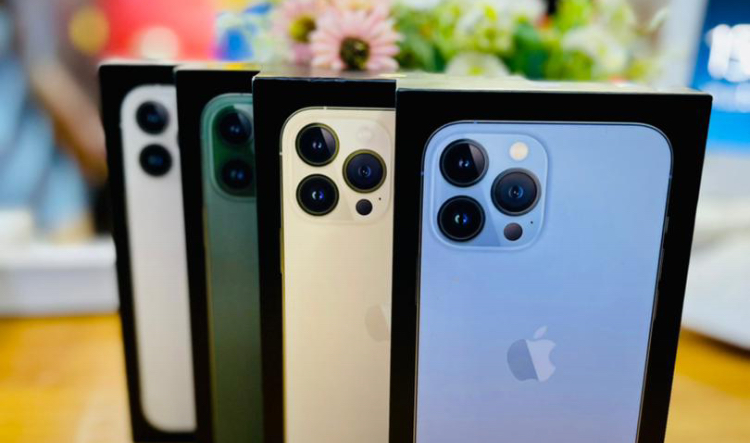The 6.1-inch iPhone 13 Pro is the successor to the iPhone 12 Pro, while the 6.7-inch iPhone 13 Pro Max is the replacement for the iPhone 12 Pro Max. Both of the new iPhone 13 Pro models are nearly identical in design to the iPhone 12 Pro models, featuring flat edges, a stainless steel frame, a textured matte glass back, and a slight increase in thickness (7.65mm). The iPhone 13 Pro models are available in Silver, Gold, Sierra Blue, Graphite, and Alpine Green.
Both of the new models feature OLED Super Retina XDR Displays that support ProMotion technology with adaptive refresh rates ranging from 10Hz up to 120Hz, much like the iPad Pro models. The displays are up to 25 percent brighter outdoors.
The iPhone 13 Pro has a 2532×1170 resolution with 460 pixels per inch, while the iPhone 13 Pro Max has a 2778×1284 resolution with 458 pixels per inch. Both iPhones feature 1200 nits max brightnessfor HDR, along with True Tone to match the color temperature of the display to the ambient light, Wide Color for rich, vivid hues, and Haptic Touch for feedback.
The front-facing TrueDepth camera system has been updated and the Face ID notch is now smaller, taking up less overall space. Like last year’s models, the iPhone 13 Pro and 13 Pro Max feature a Ceramic Shield cover glass that is infused with nano-ceramic crystals for better protection from drops. IP68 water and dust resistance is included, and the new iPhones can hold up to submersion in 6 meters of water for up to 30 minutes.
An upgraded A15 Bionic Chip powers the new iPhones. It features a 6-core CPU with 2 performance cores and 4 efficiency coresand a 5-core GPU, which is one more GPU core than is available in the iPhone 13 models. There’s also a 16-core Neural Engine. The 5-core GPU offers 50% faster graphics performance than any other smartphone chip.



Reviews
There are no reviews yet.